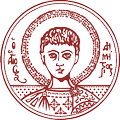Schools and their administrative bodies
The School is the basic academic unit of the University. A school cultivates and advances a particular discipline and the associated technology and arts; it organizes its programmes of studies and the relevant research, and awards its own Degree. The academic personnel of a School consist of its Professors (DEP), the members of the Special Teaching Staff (EEP), the Laboratory Teaching Staff (EDIP), and the Special Technical Laboratory Staff (ETEP).
The administrative bodies of a School are:
a) the Assembly,
b) the Administrative Board,
c) the President.
d) the Vice-president.
The Assembly of a School is made up of:
a) the professors of the School,
b) the President, the Vice-president, the Heads of the Departments,
c) the representatives of the students,
d) the representatives of the special categories of teaching staff.
The Assembly of a School has the following duties, specified by Greek Law, the University Charter, and the Internal Regulation:
a) it decides the School’s educational and research policy and its course of development;
b) it writes the School’s Internal Regulation;
c) it specifies the academic field of each of the School’s Departments; it also approves any change of academic specialization of its professors;
d) it appoints a Head of Department in case of lack of candidates;
e) it requests the Faculty Deanship’s approval of joint courses with other Schools;
f) it writes the School’s Guide of Studies;
g) it awards the School’s degrees and diplomas;
h) it allocates the teaching of the School’s courses to the teaching personnel;
j) it approves the teaching manuals for the School’s courses;
k) it appoints committees for the internal evaluation of the School and for other projects;
l) it requests from the Faculty Deanship the creation of new positions for teaching personnel;
m) it composes and updates the official lists of internal and external electors;
n) it oversees the procedures for appointments and promotions of teaching personnel;
o) it invites visiting professors and post-doctoral researchers and fully supports their work;
p) it requests the Senate’s approval for the conferment of honorary titles;
q) it allocates the available funds to the School’s various activities.
The President of a School
1. Eligible candidates for the positions of President and Vice-president are full Professors and Associate Professors of the School. Presidents serve for two years and may run for a second (continuous) term. Re-election is permitted two years after the end of their first 4-year term.
2. The President of a School has the following duties:
a) he[1] is the head of all the services of the School and supervises their proper operation according to the laws and regulations;
b) he convenes and presides over the School’s Assembly and supervises the execution of its resolutions;
c) he convenes and presides over the School’s Administrative Board and supervises the execution of its resolutions;
d) he supervises the execution of the School’s Programme of Studies;
e) he supervises the School’s register of scientific publications;
f) he issues acts of classification of professors to part-time status;
j) he forwards the resolutions of the School’s Assembly to the competent authorities;
k) he appoints committees for the execution of particular projects;
m) he writes the School’s annual report of activities and submits it to the Deanship;
n) he is the School’s representative to the Senate; he informs the School’s Assembly of the deliberations and resolutions of the Senate.
3. The Vice-president performs the duties of the President whenever the latter is absent for whatever reason.
[1] In this document the generic masculine is used in pronouns for grammatical simplicity; it refers to all humans regardless of their sex, and is meant to have no discriminatory connotations.











